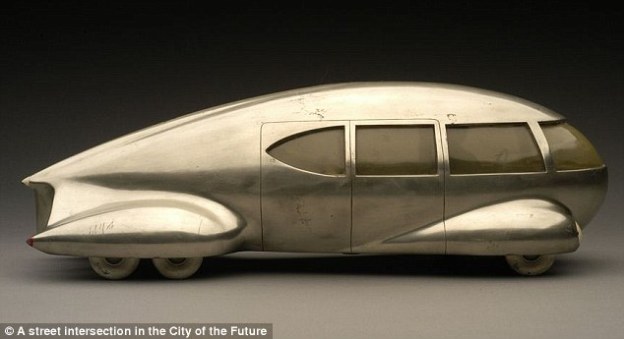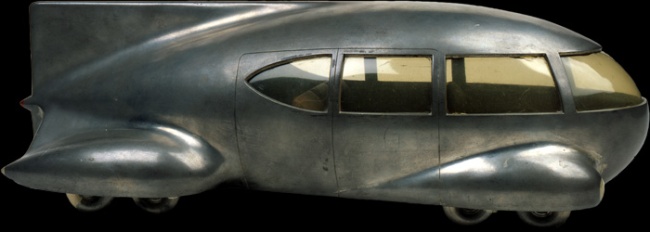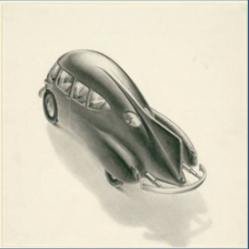Further Research
Sebastinella –
Here is my research on a car design, I have chosen to focus on the work of Norman Bel Geddes and his model transport. (Roughly 450 words.)
One of the strongest examples of how manufacturers formed an alliance with designers is shown in the work of Norman Bel Geddes. He was an American theatrical designer who became an industrial designer in the late 1920’s, and was one of the first people to seriously apply streamline concepts to his designs, using both aerodynamics and tear drop shapes.
Fig. 1 Norman Bel Geddes
He created designs for cars, ships, factories, railways and even day to day objects such as refrigerators, lamps and vacuum cleaners. Making everyday objects look like stylish and modern works of art, and creating potential masterpieces in the transport industry. His car designs are incredibly similar to those of Buckminster Fuller, as both used streamline principles, and even internally had the same composition, with the engine in the back and aiming to transport a high amount of passengers, unlike cars that had previously been built.
Fig. 2 Car no.8. (1933)
His model design for Car no.8 was created in 1933. It had such key features as six wheels, no tail fin and a tear drop shape with a flattened underside. It was designed to seat up to eight people and had large windows allowing for a very wide field of vision. There was however some aerodynamic issues with the flow pattern around the back and underside of the car, which would cause a drag effect, slowing it down, reducing it’s potential speed.
Fig. 3 Flow diagram – airplane to car no.8.
From these principles he developed his model, and a year later exhibited his new design. It kept the same features as the original, having large windows, seating up to eight passengers and having a tear drop shape. He did however use some key features from the airplane design to allow for better airflow and aerodynamics. He rounded the bottom for less road friction, and added two more front wheels to level the weight, making eight overall. He also added a tail fin, which would slice through the air cutting friction. Both cars had a real engine and were covered in chrome to look even more like a jet.
Fig. 4 1934 patent model.
Fig 5 1934 model sketch.
These models were never realized but he certainly had a huge influence on later designers, and you can notice elements of his streamlined design in later generations of cars throughout America. Vertical wings gave cars a fish-like appearance, with the ‘fishtail’ explosion appearing on cars in the mid 1940’s. So while his ‘flying cars’ never came into practical fruition, his design concepts certainly did, being a huge influence and helping American car makers consider the aerodynamics and principles needed to create deigns that set imaginary racing, flying and stylish, modern and functional works of art.
http://hotgates.stanford.edu/bucky/dymaxion/belgeddes.htm
http://viz.dwrl.utexas.edu/content/bel-geddess-flying-car-great-chimera-streamlined-era
Possible cover shape
Nick-





